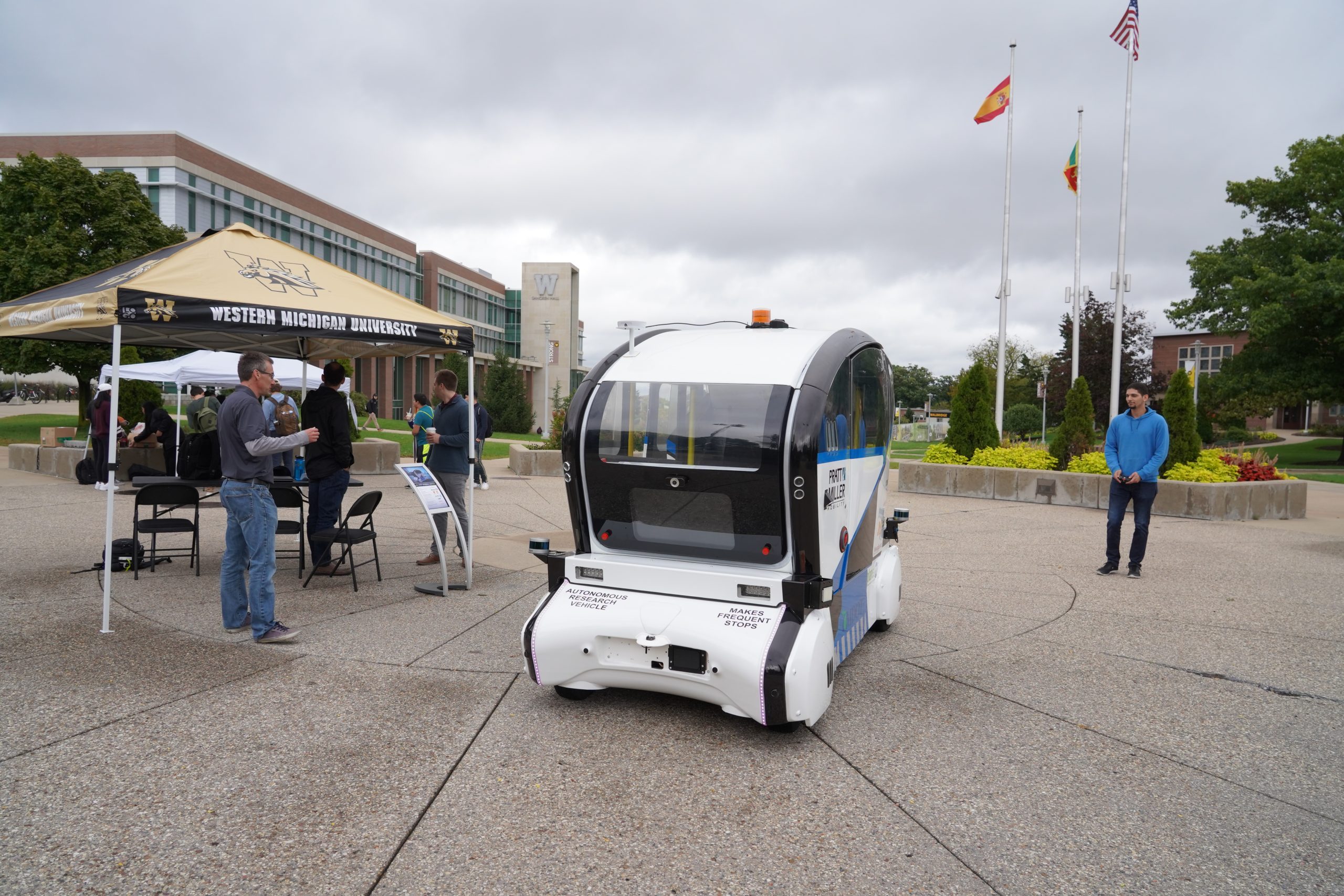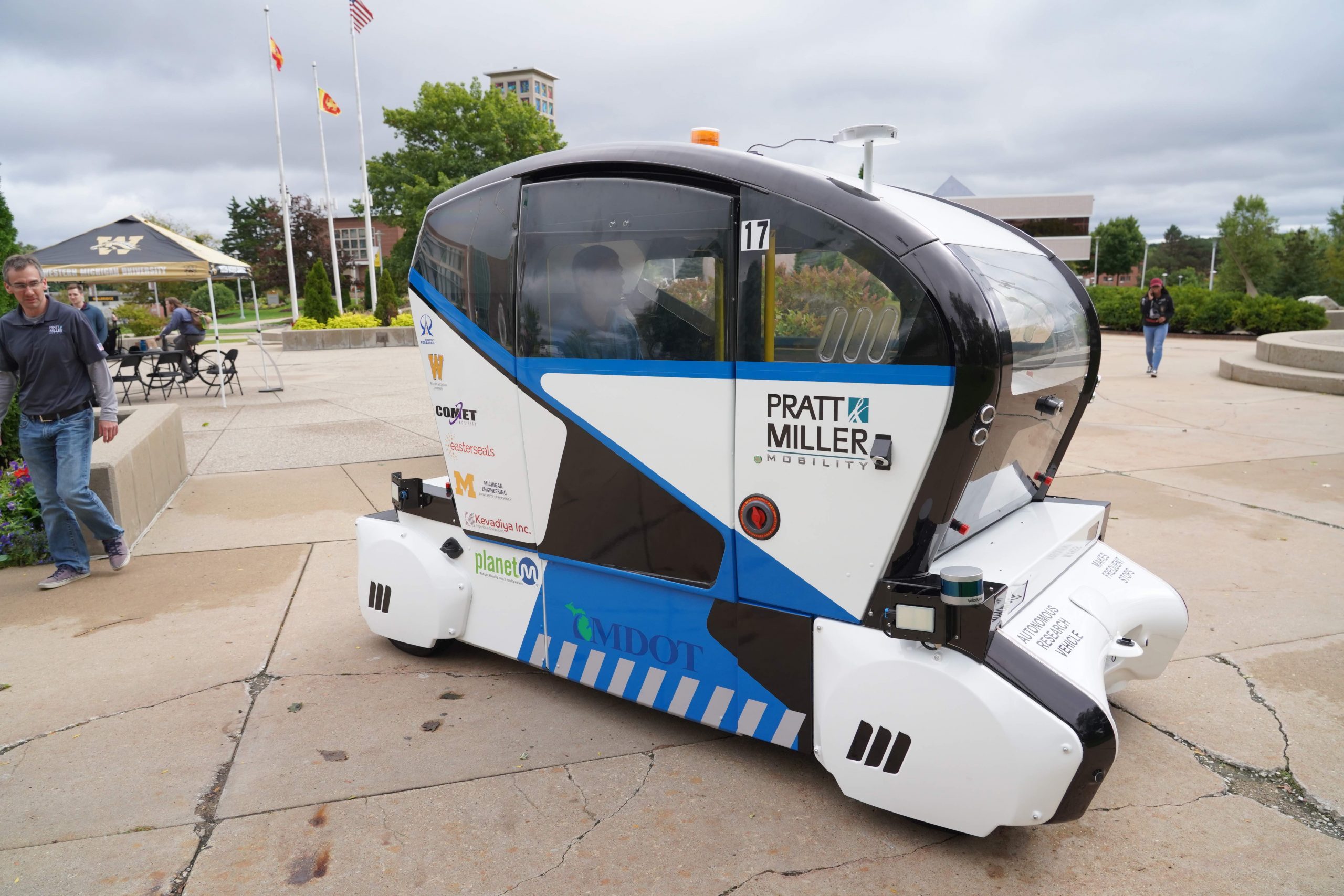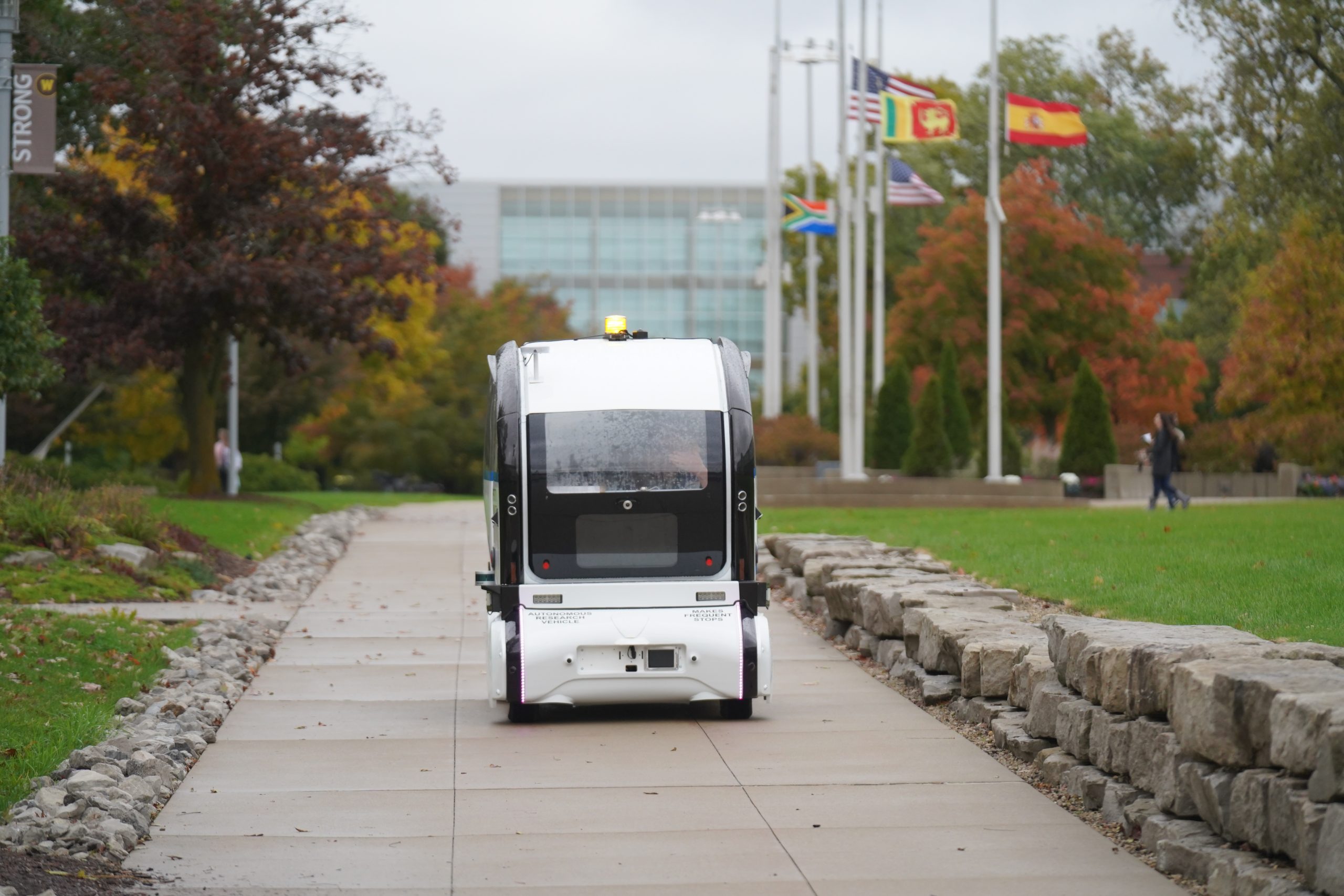




An Inclusive Autonomous Shuttle For Those With Physical Disabilities
The project launched with an inaugural ride from alumnus and Michigan Lieutenant Governor Garlin Gilchrist. Engineers from Novi-based Pratt and Miller Engineering worked with U-M researchers to adapt the custom-built, low-speed electric vehicles.
Clive D’Souza, an assistant professor of industrial and operations engineering and the leader of the U-M team, said they modified the vehicles extensively, increasing their size and adding ramps. The vehicles will shuttle students with disabilities on a roughly half-mile path across WMU’s campus.
Autonomous vehicle designers and advocates have long touted the potential benefits the technology could bring to people with disabilities, yet many questions remain about how to put this in practice in the real world. D’Souza believes the project marks a shift in autonomous vehicle technology, focusing vehicles not only on getting from point A to point B, but also on the needs of the passengers inside.
“For the longest time, automated driverless technology has been focused primarily on making the vehicle do what the engineers want it to do,” D’Souza said. “We asked the question, ‘How do we take this really cool technology and turn it into an accessible, inclusive service?’ This proof-of-concept will give us the systematic, structured real-world data that we need to begin answering that question.”
A look at the autonomous vehicle on Western Michigan University’s campus. Photo: Mark Bugnaski/Western Michigan University
The vehicles hold four passengers, have a top speed of 15 miles per hour, and have no pedals or steering wheels. A safety operator who can intervene in an emergency will be on board at all times. While they’ve undergone extensive lab testing, D’Souza’s team hopes to gather on-the-ground insight during the pilot phase by collecting detailed data about users’ interactions with the vehicle.
D’Souza says the size and operating conditions at WMU are ideal for a first foray into handicapped accessible autonomous vehicles, an area that has seen surprisingly little attention even as autonomous vehicle technology has moved forward.
“We think automated vehicles are going to substantially improve mobility for a lot of people that otherwise have limited options,” D’Souza said. “Older adults, wounded veterans, people with mobility or sensory impairments who otherwise might not be able to drive. And they’re going to be deployed on this campus so that we can learn from on-the-road experience how to improve mobility options for those people.”
The team also includes researchers from the Michigan Department of Transportation, WMU, Kevadiya Inc., Robotic Research, Comet Mobility and Easterseals.
We think automated vehicles are going to substantially improve mobility for a lot of people that otherwise have limited options.Clive D’Souza
“As an engineer, I’m really excited that his is happening in Michigan, the place with more engineers than anywhere else in the country,” said Gilchrist (BSE CE/CS ‘05). “So I think it’s only appropriate that we make the choice to step up and lead our state and our nation and world into a future that’s more connected, where more people have access to mobility services that meet their needs.”
The autonomous shuttle will operate Monday through Thursday between 8:30 a.m. and 3:30 p.m. It will shuttle students who have pre-registered to use the service through a process administered by WMU’s Disability Services for Students organization.
UNIT 33 BILTON INDUSTRIAL ESTATE
HUMBER AVENUE, COVENTRY, CV3 1JL. UK
0044 (0)24 7663 5818
